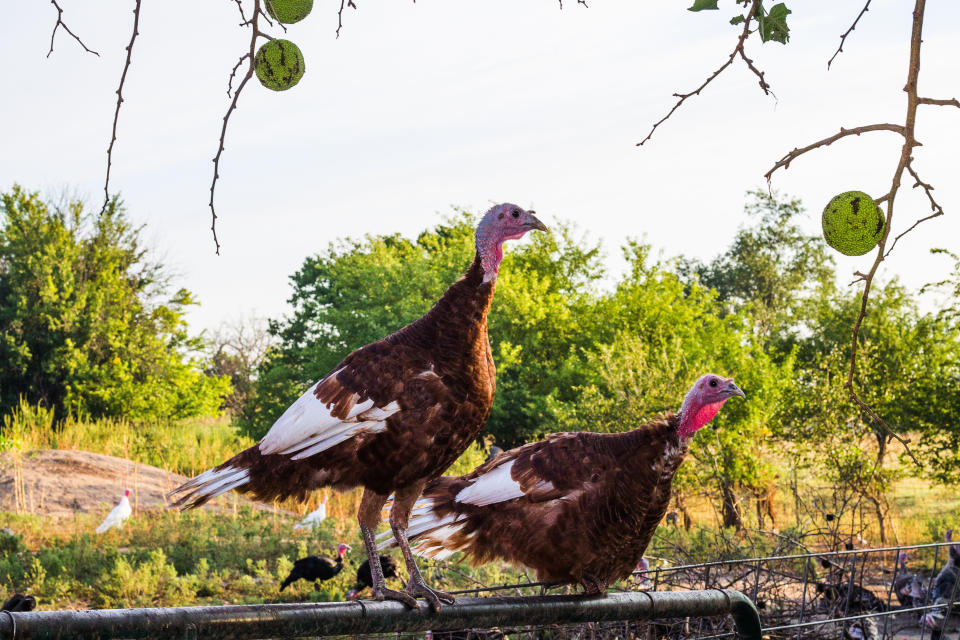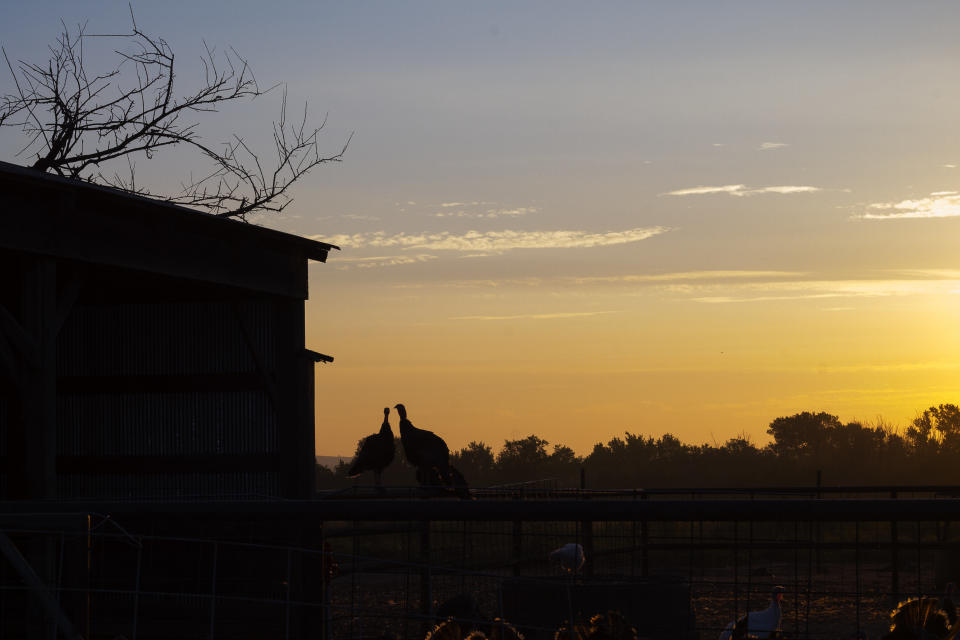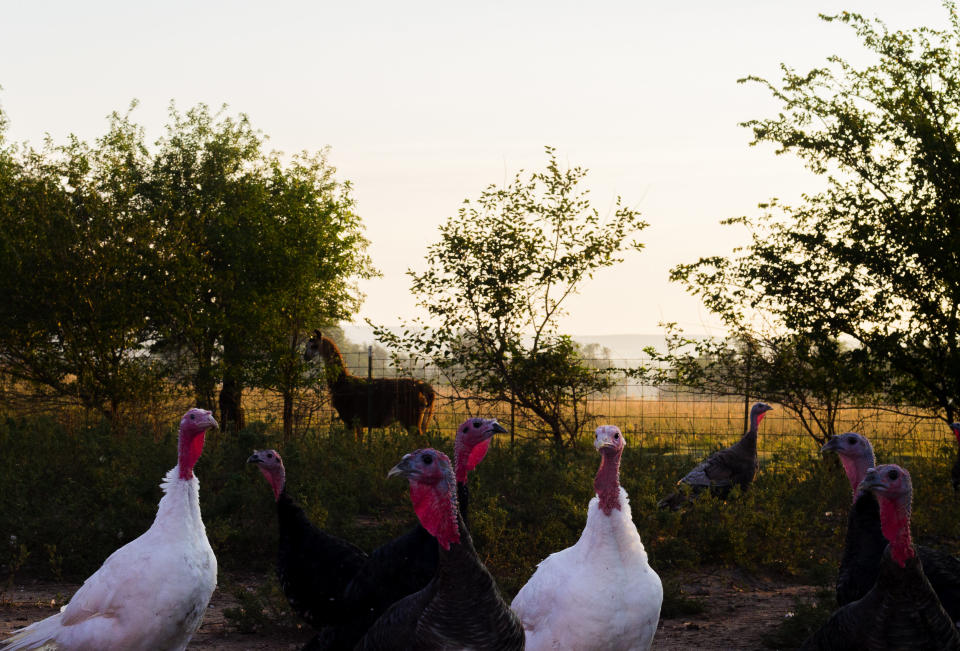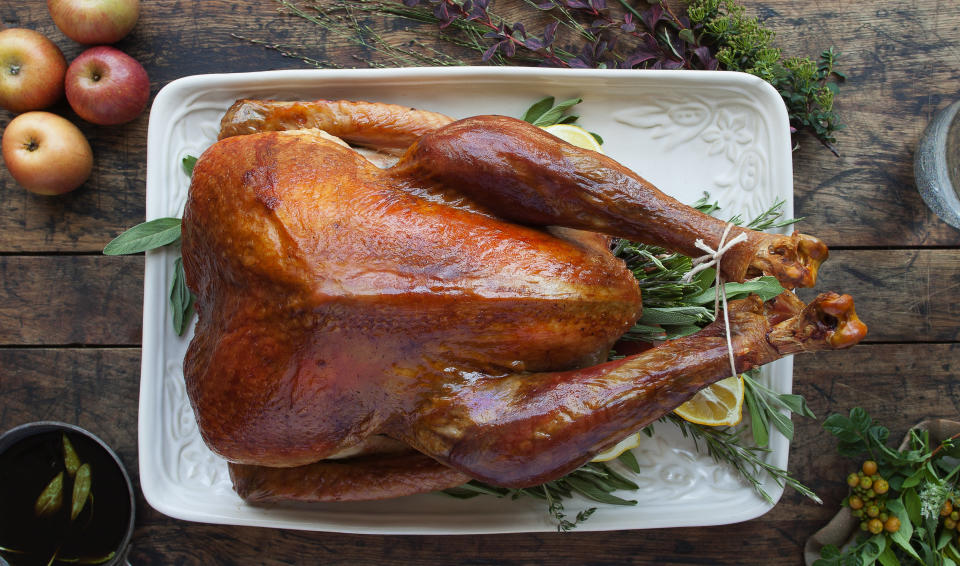Order A Heritage Turkey Right Now, And You'll Actually Help Save Them
Everything Thanksgiving: Get all our Thanksgiving recipes, how-to’s and more!

“Turkeys have just as much right to exist as chimpanzees, rhinos and everything else on this earth.”
When I spoke with fourth-generation farmer Frank Reese of Good Shepherd Poultry Ranch in Lindsborg, Kansas, about the heritage turkeys he’s bred his entire life, I didn’t expect him to get philosophical. Doesn’t he kill turkeys for Thanksgiving dinner? Why does he care whether they exist?
As it turns out, Reese needs you to eat his heritage breed turkeys, or they won’t exist at all.
Heritage-breed turkeys are different from supermarket turkeys
Before we get into what heritage turkeys are, let’s talk about what they’re not: any bird in the supermarket. As it turns out, turkeys are not created equal.
“Supermarket birds have genetic lines selected over the years to have bigger breasts and to grow faster,” explained former vegetarian and current butcher Kate Kavanaugh, the CEO and founder of Western Daughters Butcher Shoppe, which distributes Reese’s turkeys in Denver and works solely with farmers who practice regenerative agriculture. “Oftentimes birds from the grocery store are so big-breasted, they can’t walk. They’re just [bred] for production.” Americans love their white breast meat, so turkeys from factory farms have been bred to reflect that need.
Because factory-farmed turkeys often have physical problems, producers “override [the multiple issues] by confining the bird, artificially inseminating it and feeding it antibiotics,” Reese told HuffPost. [Editor’s note: Some producers are phasing out antibiotic use.] In the world of factory-farmed turkeys, it takes about 12 weeks to get a turkey to full weight, which Reese said is so speedy that it’s like “an 11-year-old child weighing 600 pounds.” Despite that, the bird in the supermarket seems ordinary to the average consumer. “We now have three generations of people who don’t know what normal is anymore; they think it’s a huge-breasted, short-legged turkey,” he said.
Compare this to the heritage turkeys raised by Reese. They have acres upon acres to roam on his ranch. Reese sent HuffPost a video of his birds and it looked like the crowd at a turkey version of Coachella ― hundreds just happily walking around in an open field of grass. They sleep outside, too, in trees. Reese grows them for 24 weeks, twice as long as factory-farm birds, and does not feed them antibiotics.

Broad-Breasted Whites are the common breed in factory farms, but Reese raises five different breeds, including Bourbon Reds and Narragansett, which have genetic lines tracing back to the 1800s. They look different from a store-bought turkey ― their legs and breast bones are twice as long. Their diet is different, as well. “Factory farm birds are fed feed only,” said Kavanaugh. “Frank’s birds are foraging on his land eating bugs and grasses, as well as supplemental feed, like almost all poultry.”
(Almost) no one is breeding heritage turkeys anymore
Heritage breed turkeys have been around since the 1800s, live more comfortable lives and look different. The problem is that very few people are breeding them anymore. Large poultry producers don’t breed heritage turkeys partly because of genetics. It takes twice as long to raise Reese’s type of birds, and that would cut into profit margins. It’s like if tomato growers decided to only grow Roma tomatoes from now on, never giving you the chance to savor heirloom tomatoes because it was too much work and too expensive.
But why aren’t there thousands of smaller farms with Frank Reese-types? Some people raise small flocks of heritage birds, but there’s nothing like the Good Shepherd operation. “I think part of it is it’s a tremendous amount of work, and it never ends,” Reese said. “It goes on seven days a week, every day of the year. People ask, ‘When do you get a break?’ Never. Once the Thanksgiving turkeys are gone, there’s still a couple thousand of breeders here, and you start the process all over again.” (In the future, there may be more farmers once the Good Shepherd Institute opens.)
It’s how breeding used to be done for hundreds of years, and Reese is the only one raising turkeys in the same way, at this scale. “When I look at my Bronze, Bourbon Red and my Narragansett turkeys, I don’t just see [the breeds], I see people. I remember Sadie Lloyd back in 1962 who sold me my first Bourbon Reds.” He knows the turkeys, too, and their families. “I keep parents, grandparents and I raise the baby turkeys. I’ve done that all my life,” he said.

He kills them because that’s what pays to keep his operation alive. “Right now I know no other way of saving them than by selling them for Thanksgiving,” Reese said.
Buy heritage turkeys because they taste really, really good
If you’ve read this far and don’t care about a heritage bird’s right to exist, that’s fine. But you could buy them for a purely selfish reason: how they taste.
“Frank’s turkeys are more buttery, more flavorful and more turkey-y,” Kavanaugh said. “They’re not going to be gamey.” Basically, it’ll taste more like turkey than any turkey you’ve eaten.
“We know my turkeys are far more nutritious for you than the modern industrial turkey,” Reese said. After all, the fewer antibiotics you consume at the Thanksgiving table, the better.
Kavanaugh said the turkey tastes better because the birds move around a lot, and flavor is created by the animal working its muscles. The diet (and the diversity of the types of food they consume) also determines flavor ― unlike factory-farm turkey, it’s not primarily corn and soy. And because the animals are allowed to physically grow and age, their muscles are used more, which again results in a better flavor. “It’s the difference between an athlete and a couch potato,” Reese noted.
And you won’t have to wait as long to eat. Because grocery store birds are “injected with a water, salt and (sometimes a) sugar solution,” that has to be cooked off. Kavanaugh said the cook time for a heritage turkey is less than half of a grocery store bird.
Heritage turkeys are better for the environment
Good Shepherd Poultry Ranch practices a philosophy of environmental stewardship, which boils down to caring about the farm itself and the land around it. Reese raises turkeys, chicken, ducks and geese in a sustainable fashion. Because it’s not a factory farm, he doesn’t deal with issues like water pollution due to poultry waste.
Heritage birds taste better. They’re better for the environment, better for you, and they enable the turkey breeds to live on, just as they’ve done since the 1800s. But if enough people don’t buy them, they’ll cease to exist. [Editor’s note: A limited supply of Reese’s turkeys are available at Heritage Foods.]
“A lot of people have asked me what would I do if this fails and it doesn’t go on,” Reese said. “I will continue to raise turkeys. I have never done this for the money. I’ve done this for no other reason than for the people who taught me as a kid, and the love of the bird.”
Heritage Foods says certain sizes of Reese’s birds may be gone by mid-November, so either get your turkey there or find a local farm selling heritage birds like Bourbon Reds or Narragansetts. No matter where you buy your heritage bird, don’t wait past early November.
Love HuffPost? Become a founding member of HuffPost Plus today.

Related...
The Best Turkey Recipes For Thanksgiving
Also on HuffPost
This article originally appeared on HuffPost and has been updated.

